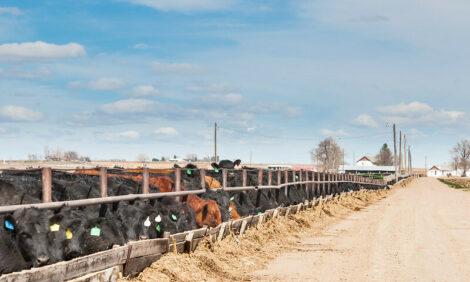



Confidence Grows, Concerns Tempering Investment
SCOTLAND, UK - A new survey of beef producers in Scotland has shown an industry that’s increasingly confident, but there are several issues that are still causing a drag on investment.Quality Meat Scotland carried out a confidence and intentions survey through September and October 2011, this followed a similar survey carried out in 2008. Those responding to the survey covered the full range of beef enterprises from suckler herds selling only store cattle through to store cattle finishers with no breeding stock of their own.
Stuart Ashworth, Head of Economics at QMS, said: “The general level of confidence among the industry is much improved on the snap shot taken in 2008. This year 35 per cent of those with a suckler herd were more confident about their future than they were twelve months ago compared to 28 per cent in 2008. While those less confident fell from 31 per cent in 2008 to seven per cent this year.
“However, among those finishing store cattle, those more confident about their future than they were twelve months ago fell from 34 per cent in 2008 to 26 per cent this year. Equally however, those less confident about their future fell from just over a quarter in 2008 to 10 per cent this year.”
The figures show that confidence levels vary between enterprise types. Those who do not sell prime cattle, for example, have the highest degree of improvement in confidence. Among those who do not sell prime cattle 45 per cent are more confident than twelve months ago and this falls to 28 per cent among those who sell some prime stock from their suckler herd down to 26 per cent among those who buy store cattle for finishing.
Not surprisingly then, given confidence is greatest among store calf producers, the greatest improvement in confidence has occurred in the North West region of Scotland. Although there is greater confidence across the board, this is not high enough to cause widespread expansion of herds. Among those declaring themselves more confident than they were twelve months ago just less than half (46 per cent) are sufficiently confident to increase their herd size while six per cent despite having more confidence are considering reducing their herd size.
Over the whole sample only 28 per cent of businesses are planning to increase their herd size although this is an improvement on the 23 per cent of herds planning expansion in 2008.
Mr Ashworth said: “What’s positive though is that the proportion of businesses planning to reduce herd size halved, from 20 per cent in 2008 to 10 per cent in 2011."
“When asked to consider investment plans over the next five years, the most common response was investment in grassland improvement. Almost three quarters of those responding plan some investment in this regard. This remains a consistent response with the 2008 survey also showing that improving grassland management was the most common priority among producers. Other investment plans that ranked high in both 2008 and 2011 were investment in plant and equipment, and cattle housing and handling.”
Concerns over the policy environment weigh heavily on business planning. The greatest concern by a large margin was the way in which changes to the Single Farm Payment will potentially impact on a business in the future. The second concern was the challenge created by input price inflation while across the survey as a whole animal health risks ranked third in relation to issues of greatest relevance to the planning horizon with changes to LFASS policy ranking fourth.
Stuart Ashworth said: “The survey shows a picture of an industry which is still growing in confidence, but one that still has some major concerns hampering its ability to invest in the medium to long term."
“Perhaps not surprisingly, given the importance of Single Farm Payments to business viability, concerns over its future are having the greatest influence on business planning followed by concerns over input price inflation. Many investment decisions are likely to remain on hold until some certainty emerges on the future shape of the CAP."
TheCattleSite News Desk


